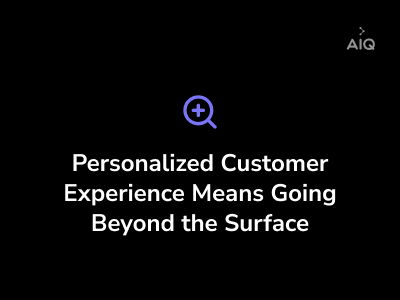How to choose the best solution for your email communication via CDP?
June 20, 2022Email marketing: still a must-have
No matter how you orchestrate the customer journey maps, make sure that all-important messages are properly delivered to those who need them.
If you believe that the times of email marketing boom have passed, you’ll be surprised to know that this technology hardly shows any signs of decay. Studies only prove it:
- More than 4 billion email subscribers use mobile email daily.
- Email marketing brings over $8.5 billion in revenue.
2.1 Every dollar spent generates 4 times more in ROI. - People actually prefer email communication.
To sum it up, email marketing is still effective, profitable, and preferred by clients.
Customer data handling as part of a digital business
Since most marketers have to collect data from different sources, data handling becomes quite a challenge. Messy data can cause inaccurate analytics, negatively affect customer communication strategy, and, unfortunately, it provokes customer churn.
When it comes to segmenting and analyzing data for useful insights, loads of unpredicted issues might arise. To cope with that, customer data platforms (CDP) might come in handy. CDP serves like a house for your customers’ data, a house where everything is in its place and can be easily found.
CDPs are versatile enough to support diverse means of client communication using external transport tools. The question is, how do you determine which email transport system is best for your needs?
ESPs help you to connect with customers
Companies put a lot of effort into enhancing customer communications. With email, they must also focus on many things including but not limited to deliverability, marketing analytics, protection from spam-flagging, data collection, compliance with GDPR, and the like.
Email service providers (ESP) help manage all this. They send emails quickly and legitimately with regard to spam rules and regulations. But when discussing an email service provider, people may actually be talking about very different kinds of services.
Four main types of email service providers
- SMTP relay providers with a lease model are the most basic ones. Essentially what they offer is an SMTP server available for rent, with some added benefits. They also protect your sender reputation. They’re good for small and middle-sized companies.
- Dedicated transactional email providers specialize in sending triggered emails, which need to be as fast as lightning. Any lagging in transactional emails can cost a lot to a business. That’s why such ESP is a must if you send more than 100 000 emails per day.
- SaaS email service providers are subscription-based ESPs that often use cloud services to send loads of emails. They are user-friendly and easy to integrate.
- ESP with integrated marketing software is one of the most pricey options. They combine various marketing tools and analysis, including multi-channel funnels to analyze the customer’s journey that leads to a purchase.
SMTP relay providers: What to expect?
SMTP relay services are used for sending email newsletters or transactional messages. They allow sending up to 5000–50000 messages per hour. For a customer, setting up a connection is as simple as using their own SMTP server. The service takes care of any issues with spam blocking and may also provide some basic statistics, reporting, API integration, etc.
Transactional email service: Why might it be your option?
For an individual SMTP server, a large volume of messages can lead to a bottleneck. Delivery time is important for any email, but for messages triggered by certain events, such as placing an order or password reset, it becomes critical.
Transactional email services are flexible and allow you to send a huge amount of letters. Dedicated ESPs with professionally designed infrastructure send thousands of emails per minute, e. g. UniOne allows sending up to 5 million letters per hour. Integration is usually made via an API, while message status updates (whether it was bounced, successfully delivered, or read) are provided through webhooks.
SaaS ESP: Just getting bigger
SaaS ESPs will be a good option for small businesses for which an in-house solution is no longer working, but a full-fledged CDP is still an overkill. Due to its versatility and ease of use, it may be an excellent way for a growing business to understand its emerging needs without having to pay much. However, integration with existing tools and data migration can still be an issue.
ESPs with integrated marketing software: No way back
Email providers with integrated marketing software are usually discussed in the context of “how do I migrate from my ESP to a CDP”. Over time, both the marketing tools and message delivery systems have become more complex and specialized, and now you can hardly find a system that is equally good on both fronts.
Features to consider before integrating
Deliverability
The ability to quickly solve any delivery issues is a must. Make sure the ESP monitors the open rates, bounces, and flagging as spam. Check the deliverability rates.
Security
Consider data privacy, protection from phishing and cyber-attacks. Ask about setting up DKIM, SPF, and DMARC records for your domain.
Integration
Are you using a CDP, CRM, CMS, or even a WordPress blog? In almost any case, you are likely to meet some hurdles with integration. Be sure to estimate how much time it will take to integrate it with ESP. Will your team require any additional training?
Cost
Don’t pay twice for the same tools. Email list management, data collection, analytics, and segmentation are already incorporated in most CDPs. SaaS ESPs or ESPs with integrated marketing pieces of software will only repeat the same features.
Customer Support
No matter how perfect your campaigns and settings might seem, delivery may still fail just because of the specific internal rules of the postal services, changed policies or some unpredictable reasons.
For such cases, it is good to have easy contact with IT experts in the middle of the chain between your business and the recipients. These specialists can figure out what exactly went wrong and provide you with the correct plan.
Make sure that your provider is ready to help 24/7. With transactional letters or time-limited promotions, every minute is worth it.
Additional features
Check twice if your setup requires certain features beyond the regular user’s scope. Some ESPs offer such services, some don’t.
- Dedicated IP or an IP pool
- Warming up new IPs
- Help with DKIM, SPF, DMARC setup
- Premium level customer support (extra service with stated SLA)
- Personal consulting
Note that ESP integration with an existing system can take a few weeks. You might need extra assistance from IT specialists or marketers.
Regarding the email sender reputation, sometimes it is useful to figure out whether an ESP offers not only a good shared IP pool but also a possibility to provide you with a dedicated IP which helps to make your mailings completely independent of the “neighbors”.
Note that dedicated IPs should be properly warmed-up before use, which is a complex process requiring a certain period of time and specific skills for getting the desired result. In UniOne it is offered as an extra service.
So, how do you find a suitable tool for your company?
Small companies are likely to choose more easy-to-use solutions like SMTP or cloud-based SaaS, while the middle ones can stake at the integration of CDP with ESP. Bigger companies should rely on more technically complex solutions and data-driven tools. UniOne suggests an innovative yet proven approach and offers a wide range of services. Together with CDP your transactional emails will be sent on time and give you more insights on how to enhance your email strategy and customer communication.
Email marketing + CDP can become your perfect combo that lowers customer churn and increases your ROI in the long run. But keep in mind 5 points before choosing:
- Deliverability
- Security
- Integration
- Cost
- Customer support
As for additional tools, it’s entirely up to you what is more useful. Each business has its own strategy, goals, stages, volumes, and subtle details. Combine integrated approach with custom services, use ESP together with CDP integration wisely.


